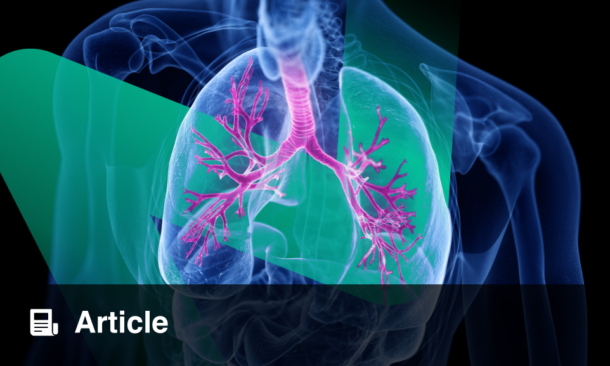Abstract
Lung cancer is the most common cancer worldwide and is a fundamental health problem in the UK. Mortality rates are much higher in the UK than other European countries, with overall 5-year survival rates in England and Wales currently as low as 7%. Reducing diagnostic delays may increase the proportion of early stage lung cancer and improve survival, yet the literature surrounding these issues suggests that many people continue to wait a considerable time before presenting symptoms to a clinician. To gain an in-depth understanding into the factors that may influence this delay, this review aims to explore some of the social and psychological barriers that patients face in seeking medical attention for lung cancer symptoms. Likewise, with the majority of lung cancer cases strongly linked to tobacco use, the impact of smoking status and whether it has an effect on an individual’s pathway to diagnosis is imperative to this review. The evidence found suggests that delays in symptom reporting are attributed to low perceptions of risk and a difficulty in recognising lung cancer symptoms early, especially when other comorbidities are present. Additionally, the de-normalisation of smoking appears to have confused understanding regarding risk and reinforced blame and stigma, which ultimately hinders help-seeking behaviours. Future research is thus required to develop strategies and interventions that raise awareness of lung cancer symptoms and empower people to engage in help-seeking behaviours.
INTRODUCTION
Lung cancer is the primary cause of cancer mortality,1 with an estimated 1.6 million new diagnoses and 1.4 million deaths annually.2 Despite advances in treatment, survival rates in the UK are vastly below the average rates of Europe and America; only 25% of patients with lung cancer in England and Wales survive 1 year post diagnosis, with 7% surviving ≥5 years.3,4 For those with early stage lung cancer, curative treatment is more likely to be successful,5 yet only 11% of patients in the UK receive surgery.4,6 Differences in mortality are largely dependent on lung cancer staging at the time of presentation.7 Stage I non-small cell lung cancer patients have an average 1-year survival following diagnosis of 58–73%, compared to the 2–13% average survival of those with Stage IV.7,8 To maximise patient survival, the barriers that lead to late stage diagnosis need to be considered, including delays in seeking medical attention, the presence of comorbidities, and emotional impacts.9
Associated with this is the use of tobacco, with approximately 90% of lung cancer diagnoses linked to cigarette smoking.6 Typically, a lifetime smoker is 20-times more likely to be at risk of developing lung cancer compared to a non-smoker.6 A recent UK prospective study10 indicated that smokers have larger tumours at the time of diagnosis and increased presence of metastatic disease compared with non-smokers.11 While it is biologically plausible that nicotine can accelerate abnormal cell development,6 this progression in smokers may also be due to psychological and behavioural factors, such as difficulties in recognising symptoms.3,4,12
THE PROBLEM: CONSEQUENCES OF A LATE DIAGNOSIS
Delays in patient recognition of symptoms may often lead to late diagnosis, resulting in the advancement of the tumour or presence of metastatic disease.13,14 The likely impact of a diagnostic delay on survival has been a significant part of a UK national government strategy;15 however, despite the initiation of several lung cancer campaigns aimed to enhance public awareness of primary symptoms, the delay between identification of symptoms and help-seeking behaviours remains extensive.16 Based on survey data collected from 172 NHS trusts in England and 3 in Scotland, patients reported delays of 117 days between initial onset of symptoms and diagnosis, with 98–99 days being accounted for by patients delaying in consulting their primary care physician.4,17 Individual reports however may vary dramatically, with symptoms being recalled anywhere between 4 and 24 months prior to diagnosis.18 Given the retrospective and self-reporting nature of these studies, the potential for recall bias cannot be discounted.4,17,19 Likewise, since a proportion of patients either passed away or were clinically unwell prior to completing questionnaires, a different type of bias may have been present.4,7,12,19 The methodological difficulty of recruiting lung cancer patients due to the rapid clinical decline in condition may further render the data unrepresentative of this population.12,17 In addition, there is the prospect of confounding data, since details of diagnostic stage, comorbidities, and histological type of cancer were not collected.4,17,19
Cross-cultural variations across 16 countries have shown differences in the delay in symptom reporting, which ranges from 7 days to 6 months.12 Several suggestions have been made to explain this difference: the accessibility to economic resources in the area examined, patient compliance with scheduled appointments, and late presentation of symptoms.12,14 Due to the range of potential factors, it is difficult to draw any concrete conclusions as to whether delays across European countries, including the UK, are a consequence of the patient or the healthcare system.12,14 Nonetheless, the considerable delays that lung cancer patients experience accentuate the need for stronger evidence-based clinical epidemiology of presenting symptoms.20 While this body of evidence is growing,4,8,13,21 further exploration into the factors that contribute to this delay, particularly in the UK and considering smoking status as a factor, are required.18,20,22
LACK OF SYMPTOM AWARENESS AND ASSOCIATED FACTORS
Although lung cancer is regularly identified in asymptomatic individuals who present for other health difficulties,2 some individuals explicitly experience indications of lung cancer in the early stages yet rarely associate the symptoms with malignancy.18,23 For patients who do experience symptoms, these can be diverse, including both lung specific symptoms, such as coughing, breathing changes, chest pains, and haemoptysis, as well as systemic symptoms, such as loss of weight or appetite, and fatigue.24 Difficulties in symptom recognition or awareness of severity can impact delays in seeking medical attention, particularly in patients who self-manage their symptoms.25 This can lead to an increased risk of tumour progression, metastatic disease, and subsequently late-stage diagnosis.2,24
Early identification of lung cancer symptoms combined with medical help-seeking behaviour has the potential to prolong survival for patients with lung cancer.26 Evidence underlines several variables that are a complex mix of individual and psychosocial factors that have the potential to influence this delay.5 Factors such as sex, age, and socioeconomic status (SES) have previously been found to correlate with delays in reporting cancer symptoms.27-29 Additionally, anxiety, perceived severity of symptoms, attitudes toward seeking medical help, and fears of a diagnosis emerge as important psychological factors that perhaps mediate delay and how the patient reports their symptoms on early presentation to a general practitioner (GP).5,27,30,31 For example, abstaining from seeking medical advice in the fear that their GP will castigate those in need for ‘time wasting’ presents a repeated barrier to the initiation of diagnostic investigations.3,5,32
Awareness and interpretations of symptoms, as well as broader social factors, can delay diagnosis.4,18,25,28,30 Out of 360 newly diagnosed lung cancer patients, of whom 4% were non-smokers, 270 (75%) reported having no understanding of symptoms, and 171 (51%) described how their first symptom(s) was not serious enough to be associated with the disease.4 Similarly, retrospective interviews were conducted with 22 lung cancer patients (of whom 21 were current or former smokers) to obtain a pre-diagnosis symptom history.18 Although patients described symptoms as a continual change in health status, such as breathing changes, cough, chest pain, or profound fatigue, they did not construe them to be serious at their onset.5,18 Instead, the most plausible reason for delay was that while symptoms are reported as new, they are often too generic, especially in the context of co-existing respiratory disease (n=11), to raise concern.3,14,25,31 The likelihood of illness is therefore only contemplated when it is enforced upon patients as a result of the severity of their symptoms.4,18,31 Nonetheless, the failure to use any objective validation of the presence and timing of data reported questions the validity and reliability of findings.14
THE PRESENCE OF COMORBIDITIES
Lung cancer is strongly associated with age and smoking, and both of these factors are associated with increased comorbidities, such as chronic obstructive pulmonary disease (COPD), diabetes, cardiovascular disease, and previous or concurrent malignancies.32 Statistics show that 88% of patients have a chronic condition, while 22% have ≥5 comorbid diseases.33 The presence of comorbidities may lead to symptoms being attributed incorrectly (by the patient or doctor) resulting in diagnostic delays.24 In a study exploring help-seeking behaviours, patients at high risk of developing cancer had greater levels of comorbidities affecting respiratory function, such as COPD.34 This overlap makes it difficult for patients to differentiate symptoms, and potential lung cancer signs can be mistaken for existing respiratory conditions.34 This strengthens the argument that perhaps knowledge of a symptom alone is not sufficient to tackle late diagnosis.18,34,35
COPD is present in 50–80% of lung cancer patients33 and includes symptoms of coughing or breathlessness, with risk factors such as smoking.35 Individuals with COPD have reported taking twice as long to seek medical advice following the onset of symptoms.3 Smith et al.4 conducted face-to-face interview surveys and revealed that patients with COPD or those who were long-term smokers had longer delays in seeking medical attention. However, some symptoms were linked to decreased patient time to presentation; for example, those who had previously undergone hospitalisation for a chest infection consulted their doctor in half the time of others.4
SMOKING STATUS AS A POTENTIAL BARRIER TO SYMPTOM PRESENTATION
The relationship between smoking and lung cancer is universally recognised, with 80–90% of all lung cancers resulting from tobacco smoke.5,6,36 Nevertheless, research indicates that smokers, who are at higher risk of developing lung cancer, are less likely to seek medical advice for symptoms.13,37 A health survey given to 4,193 individuals aged >50 years (2,042 responders) asking patients to report their help-seeking behaviour for symptoms experienced in the past 3 months, demonstrated that smoking status was significantly and independently linked with help-seeking behaviours, with smokers less prone to pursuing medical attention than non-smokers when they experienced symptoms.13 A notable limitation of this research was the failure to gather data on whether participants pursued assistance for preceding incidents of a cough or hoarseness prior to the 3-month window.13,38 This is an important factor given that an earlier all clear diagnosis can postpone help-seeking behaviour for continual or new symptoms.38
Crane et al.39 conducted qualitative focus groups, with lay members stratified by smoking status, to explore the presumption that current smokers are more likely to delay seeking help. While symptom knowledge among this cohort was relatively high, smoking groups reported a trend towards a low perceived susceptibility of lung cancer.39 Downplaying the risk of smoking and a lack of urgency in help-seeking for symptoms considered mild was particularly evident among those most at risk (i.e. smokers).39 However, it should be noted that the participants were, on average, 10 years younger than most patients diagnosed with lung cancer; thus, confounding the generalisability of these findings.39 In addition, Carter-Harris et al.2 found that smoking status is not an independent barrier influencing time taken to present with symptoms. Moreover, a delay in symptom presentation is believed to be associated with the concealing of tobacco use or by individuals linking symptoms they experience to smoking.40
Research highlights the lack of knowledge relating to lung cancer risk factors among both smokers and former smokers; it is therefore important to comment that a smoker may not automatically translate risks into knowledge or awareness of typical symptoms associated with this disease.41 Future exploration is indeed required to fully comprehend the connection between smoking status and late presentation of lung cancer symptoms.2
STIGMA AS A BARRIER TO PRESENTATION TO GENERAL PRACTITIONERS
Evidence describes how many people are reluctant to seek medical advice for respiratory problems due to the stigma surrounding smoking.1,18,29,38,39,42 Although the de-normalisation of smoking has developed into an encouraging and active pathway to tobacco control, the association between lung cancer and smoking remains strong.39 Subsequently, both current and former smokers have expressed feelings of blame and stigmatisation by friends, family, and clinicians.40,42 Therefore, the hesitancy in seeking medical advice can be due to the general assumption that lung cancer is a smoker’s disease and, for this reason, self-imposed.1 However, this assumption also leads to those who have never smoked and ex-smokers often experiencing the same stigmatisation.1,40
The relationship of perceived lung cancer stigma (LCS) and timing of medical help-seeking behaviour in symptomatic patients by smoking status was explored in a study; patients were categorised as never, former, or current smokers.43 The impact of smoking status on perceived LCS revealed no statistically significant findings among the three smoking status groups.43 Patients with lung cancer have therefore been found to report higher levels of self-blame and poorer self-esteem regardless of smoking status.1,44 Drawing upon 45 narrative interviews exploring lung cancer patients’ perceptions of stigma, participants reported having suffered exceptional stigma and unfair blame for their illness.45 One participant described that although he had never smoked, he recalled negative attitudes from hospital staff and presumptions that smoking was the primary cause of his disease.5 Likewise, in a recent qualitative study, many participants felt reprehended because of their smoking history and marked as social outcasts by their families and GP.42 This can have negative implications for individuals’ self-worth and can bring about a sense of self-responsibility and embarrassment.5,42
Patients have reported feeling that clinicians have a tendency to incriminate those presenting with lung cancer;32,46 a similar view was expressed among a group of health professionals, who suggested that experts automatically assume lung cancer patients to be smokers.46 Consequently, non-smokers experience stigma more severely since they are subconsciously thought to be responsible for their cancer.47 It is not surprising therefore that the stigma attached to lung cancer acts as an obstruction to help-seeking behaviours and may hold many patients back from reporting distressing symptoms.48 Indeed, future research is required to validate these findings and to understand LCS as a barrier to early presentation.46
THE IMPACT OF LUNG CANCER SCREENING ON EARLY DIAGNOSES
One promising approach for improving late diagnoses is to provide screening programmes for early stage disease.49 Trials such as the Danish Lung Cancer Screening Trial (DLCST), the Dutch-Belgian (NELSON) trial, and the UK Lung Cancer Screening Trial have been undertaken to determine the efficiency of low-dose computed tomography (CT) in high-risk smokers and ex-smokers.49-51 Although the National Lung Screening Trial (NLST) reported a 20% relative risk reduction in lung cancer mortality, the favourable prospect of lung cancer screening can only be achieved if individuals at risk participate in screening programmes.47,49 Research has highlighted that cultural barriers, such as knowledge, fatalistic views about lung cancer or its screening process, mistrust of healthcare systems, and smoking status, may inhibit participation.50,52
Silvestri et al.53 revealed that smokers were less likely to participate in screening trials than non-smokers based on four typological attitudes identified in regard to lung cancer screening: those who fear an expected diagnosis at screening; avoiders, who prefer not to know the outcome of a screening test; fatalists, who feel lung cancer is an uncontrollable disease and view screening as a drawback; and those that perceive stigma and tobacco dependence as a barrier.49,52 Current smokers held the most negative views and have been found to report emotional barriers, such as fears or worries of what the doctor might say, and avoidance of lung cancer-related information.52 This is a commonly reported attitude towards delays in symptomatic presentation among smokers, as well as being a clear barrier to screening uptake.53
Perceived smoking-related stigma is a largely reported barrier to screening uptake due to associated feelings of humiliation and self-blame, leading to impeded medical help-seeking behaviour, low levels of patient engagement, and potentially decreased participation in cancer screening.54 Although it has been suggested that future screening programmes should integrate smoking cessation support strategies with CT lung screening,50 the role of perceived smoking-related stigma is an essential deterrent to screening that may lead to delays in symptom presentation.49
PATIENT DEMOGRAPHIC FACTORS ARE IMPORTANT CONCERN DETERRENTS
Contradictory evidence has emerged to suggest that demographical factors further influence symptom awareness, knowledge, and time taken to present with symptoms.3,41,55 A few studies in particular established that population samples consisting of low SES and ethnic minority backgrounds have poor awareness of lung cancer symptoms; these are the same demographic groups that generally have cancer diagnosed at an advanced stage.5,24,41 Although rates of smoking in the UK have fallen in the last decade, the pattern is much more intricate for minority ethnic populations.56 Evidence suggests that ethnic minority groups possess relatively poor knowledge about smoking and associated diseases, such as lung cancer, and are less likely to cite smoking as a significant health risk.56 Moreover, tobacco usage is markedly higher among low SES groups, which may account for the prevalence of smoking among some minority ethnic groups.56,57
In a UK public-based survey, indications of a link between low SES, lower awareness of cancer warning signs, and greater anticipated delay in seeking help were evident.9 Inadequate knowledge and understanding of personal risk is suggested to result in late presentation and poorer access to health services.17,19,41 Interestingly, Quaife et al.55 recognised that people with higher education and higher SES were more likely to report that they were too busy to seek medical help for symptoms, or were particularly likely to report greater delays of presentation. This finding was further echoed in an analysis of data from the National Survey of NHS patients in the UK.17 However, two worldwide systematic reviews found no conclusive evidence to suggest that age, sex, SES, and ethnicity influence the presentation of lung cancer symptoms.28
PROBLEMS WITH THE CURRENT LITERATURE
A central part of the UK government strategy to decrease cancer mortality is to shorten delays in diagnosis.15 A significant part of this work involves efforts to reduce the prolonged gap between patients’ detecting possible signs of lung cancer and seeking medical assistance.25 Current studies are limited in size and are insufficient in terms of the reasons associated with delay.25 This casts doubt over the generalisability of existing findings when transferring them to specific populations.19 Additionally, most studies recruit patients following a large time lapse since diagnosis; this leads to recall and reporting bias, which has the potential to reduce accuracy of information on the factors influencing the delay in reporting symptoms.4
Generally, the literature reviewed highlights the heterogeneous nature of barriers that prevent or delay patients from visiting a clinician with symptoms. These include lack of knowledge,41 stigmatisation and blame,45 perceptions that a GP will not be receptive to symptom concerns, and misattribution of symptoms to smoking habits or comorbid conditions.18,31 Previous research clearly underlines the complexity of smoking status as an additional factor associated with delay, as patients fail to take alarming symptoms seriously enough to warrant medical aid.13 Nonetheless, much of this research is retrospective and requires further research to unravel the intricate relationship between these variables.13
SUMMARY AND RECOMMENDATIONS
In conclusion, identifying the symptoms and factors that prompt an individual to seek medical help is complicated and remains a challenge.24,25 The initiation of further research to understand the diagnostic process and to ascertain the barriers associated with increased time to presentation is required to promote earlier diagnosis.5,12,29 Future research should aim to determine the effect on mortality and quality of life of the prompt reporting of symptoms and timely diagnosis of lung cancer.25 Much can be gained from public awareness campaigns related to other cancers, such as breast and bowel cancer.25 For these diseases, a strong message that reporting symptoms early and obtaining a rapid diagnosis will inevitably improve chances of survival.25 This message should be used as a platform for future investigative trials aimed to ascertain more about the reasons of delayed diagnosis.13,17 Research findings can facilitate the development of interventions to improve help-seeking behaviours and ultimately improve morbidity, mortality, and psychological outcomes through earlier stage diagnosis.17







